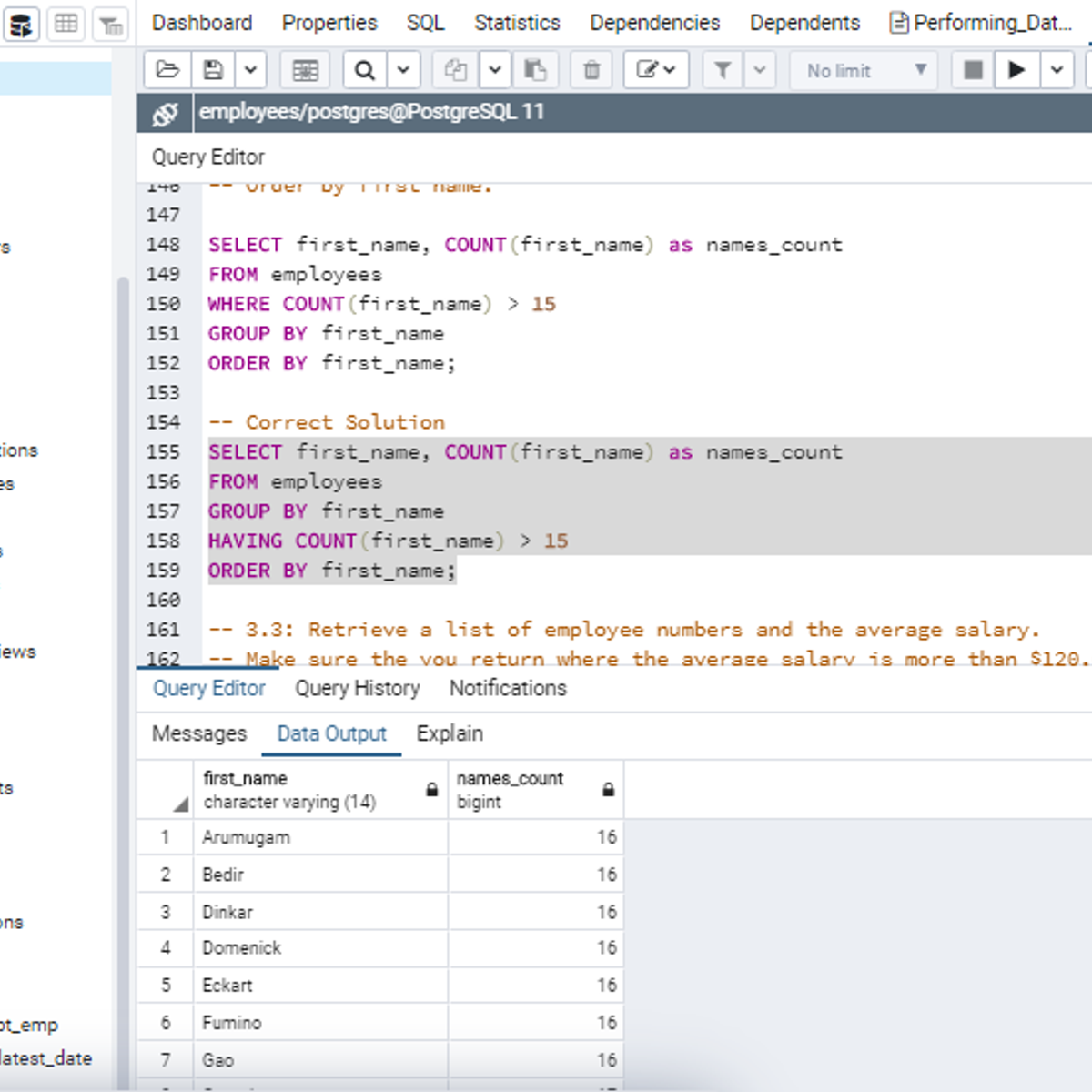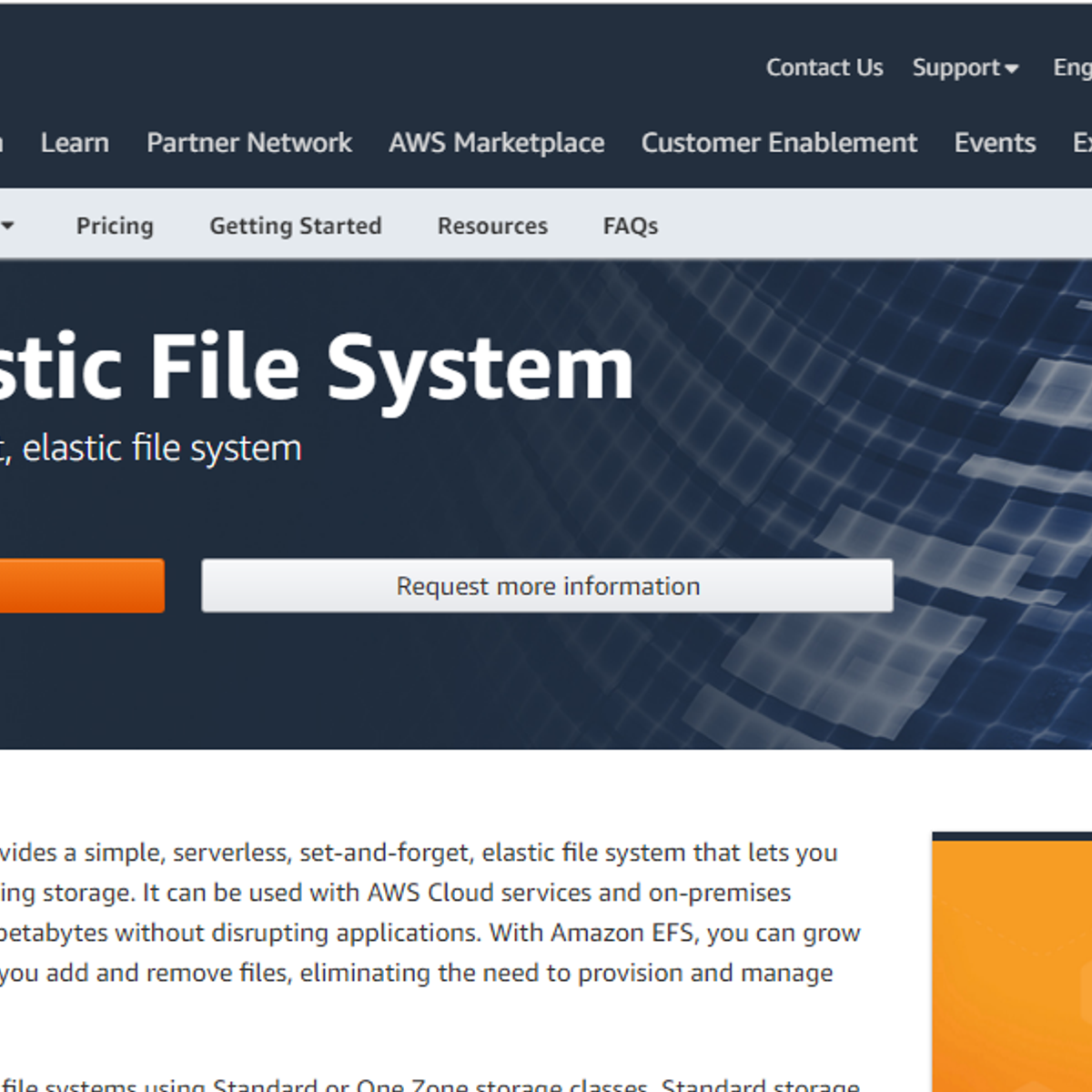Back to Courses









Data Management Courses
Showing results 1-10 of 399

Migrating to Cloud SQL from Amazon RDS for MySQL Using Database Migration Service
This is a self-paced lab that takes place in the Google Cloud console.
In this lab, you migrate MySQL data from an Amazon RDS instance for MySQL to Cloud SQL for MySQL using a one-time Database Migration Service job and an IP allowlist for connectivity. After you create and run the migration job, you confirm that the data have been successfully migrated to your Cloud SQL for MySQL instance.

Performing Data Aggregation using SQL Aggregate Functions
In this 2-hour long project-based course, you will learn how to retrieve data from tables in a database using SQL SELECT statement with SQL Aggregate functions. The aggregate functions we will consider in this project are COUNT, SUM, MIN, MAX and AVG. Aggregate functions are used to summarize data from rows of a table into a single value. In addition, you will learn how to set conditions on the output of an aggregate function using the HAVING clause. Finally, you will learn how to tidy up the result set of aggregate functions using the ROUND function.
Note: You do not need to be a data administrator or data analyst to be successful in this guided project, just a familiarity with querying databases using SQL SELECT statement suffice for this project. If you are not familiar with SQL and want to learn the basics, start with my previous guided projects titled “Performing Data definition and Manipulation in SQL." and “Querying Databases using SQL SELECT statement”

Introduction to Enterprise Computing
Large Scale Enterprise Computing powers all major transactions, and the Mainframe is responsible for 87% of all credit card transactions and enables 71% of all Fortune 500 companies. Mainframes are fundamental on how we do business, and IBM Z is the only production mainframe sold today. Virtually everyone depends on it. This is your introduction to the hardware, operating systems, security, and features that make this possible.
On successful completion of this course, learners are eligible to earn their Introduction to Enterprise Computing badge. More information can be found here: https://www.youracclaim.com/org/ibm/badge/introduction-to-enterprise-computing

Protecting Data with NetApp Cloud Manager & Cloud Volumes ONTAP for Google Cloud
This is a self-paced lab that takes place in the Google Cloud console.
In this lab, you will learn how to implement a full data protection strategy with NetApp Cloud Volumes ONTAP and Cloud Manager capabilities.

Relational Database Administration (DBA)
Ongoing and proactive management is critical to the security and performance of database management systems.
Database administration is the function of managing the operational aspects of database systems and maintaining them. Database administrators work to ensure that applications make the most efficient use of databases and that physical resources are used adequately and efficiently.
In this course, you will discover some of the activities, techniques, and best practices for managing a database. You will learn about configuring and upgrading database server software and related products. You will also learn about database security; how to implement user authentication, assign roles, and assign object-level permissions. You will also gain an understanding of how to perform backup and restore procedures in case of system failures.
You will learn about how to optimize databases for performance, monitor databases, collect diagnostic data, and access error information to help you resolve issues that may occur. Many of these tasks are repetitive, so you will learn how to schedule maintenance activities and regular diagnostic tests and send automated messages of the success or failure of a task.

Introduction to AWS Elastic File System
Amazon Elastic File System offers a simple interface that allows you to create and configure file systems quickly and easily in AWS. By the end of this project, you will get a real world experience of working with EFS on a production environment. The Idea is to create an EFS in AWS and create a text document using one Linux Instance and access the same document via another Linux Instance.

Dataflow: Qwik Start - Templates
This is a self-paced lab that takes place in the Google Cloud console. This page shows you how to create a streaming pipeline using a Google-Provided Cloud Dataflow template.

Microsoft Azure Relational Databases
In this 2-hour long tutorial, you will learn how to create, and configure a Microsoft Azure Database for MySQL server and database. We will do this by walking through the process of creating a free trial subscription on Azure, logging in and getting familiar with the Azure Portal. We will create a Resource Group in preparation for creating the Azure database and then step through the process of configuring and deploying an Azure Database for MySQL server. From here we will connect securely to the cloud based server and create a new database. We will then populate the database with some sample data, query and update the data using the MySQL command line tool. Once complete we will restore the database to a point in time using the Azure restore database process and finally clean up unused resources keeping costs to a minimum. The skills learned in this guided project provide the foundation to understanding and implementing Azure Relational Databases specifically in relation to MySQL which is a fully managed database offering from Microsoft Azure.
Note: This course works best for learners who are based in the North America region. We’re currently working on providing the same experience in other regions.
If you enjoy this project, we recommend taking the Microsoft Azure Data Fundamentals DP-900 Exam Prep Specialization: https://www.coursera.org/specializations/microsoft-azure-dp-900-data-fundamentals

Security and Privacy for Big Data - Part 2
This course sensitizes regarding privacy and data protection in Big Data environments. You will discover privacy preserving methodologies, as well as data protection regulations and concepts in your Big Data system. By the end of the course, you will be ready to plan your next Big Data project successfully, ensuring that all privacy and data protection related issues are under control. You will look at decent-sized big data projects with privacy-skilled eyes, being able to recognize dangers. This will allow you to improve your systems to a grown and sustainable level.
If you are an ICT professional or someone who designs and manages systems in big data environments, this course is for you! Knowledge about Big Data and IT is advantageous, but if you are e.g. a product manager just touching the surface of Big Data and privacy, this course will suit you as well.

Supervised Machine Learning: Regression
This course introduces you to one of the main types of modelling families of supervised Machine Learning: Regression. You will learn how to train regression models to predict continuous outcomes and how to use error metrics to compare across different models. This course also walks you through best practices, including train and test splits, and regularization techniques.
By the end of this course you should be able to:
Differentiate uses and applications of classification and regression in the context of supervised machine learning
Describe and use linear regression models
Use a variety of error metrics to compare and select a linear regression model that best suits your data
Articulate why regularization may help prevent overfitting
Use regularization regressions: Ridge, LASSO, and Elastic net
Who should take this course?
This course targets aspiring data scientists interested in acquiring hands-on experience with Supervised Machine Learning Regression techniques in a business setting.
What skills should you have?
To make the most out of this course, you should have familiarity with programming on a Python development environment, as well as fundamental understanding of Data Cleaning, Exploratory Data Analysis, Calculus, Linear Algebra, Probability, and Statistics.
Popular Internships and Jobs by Categories
Find Jobs & Internships
Browse
© 2024 BoostGrad | All rights reserved